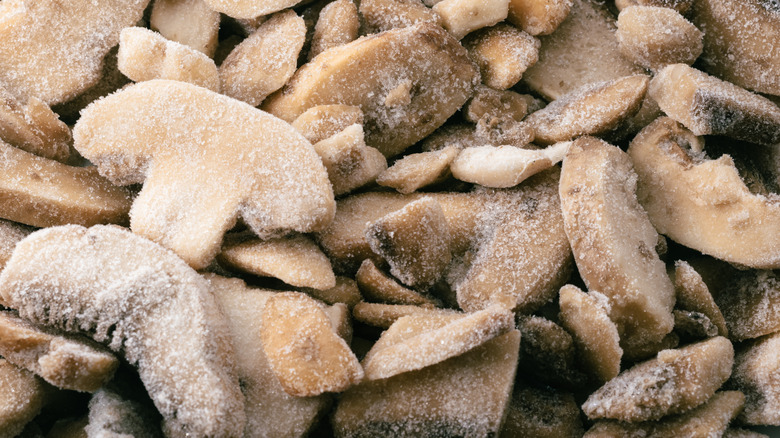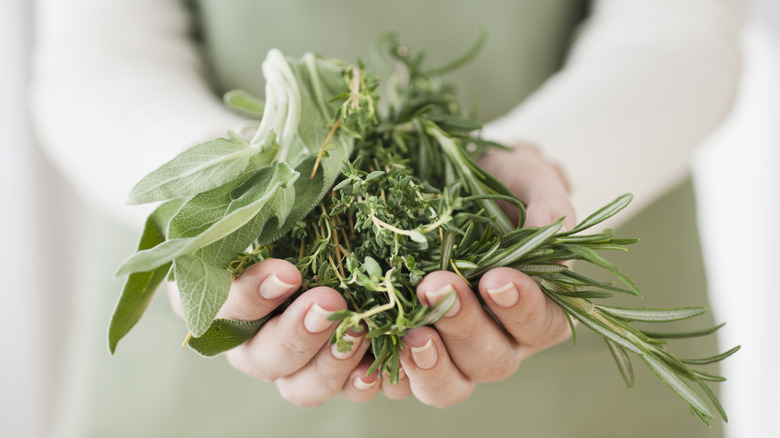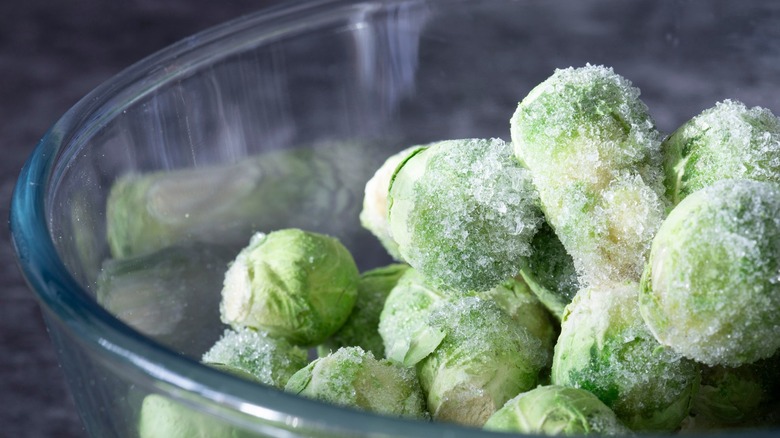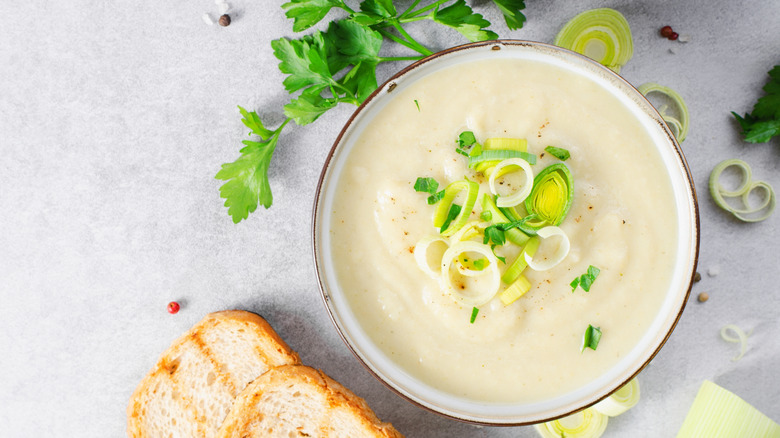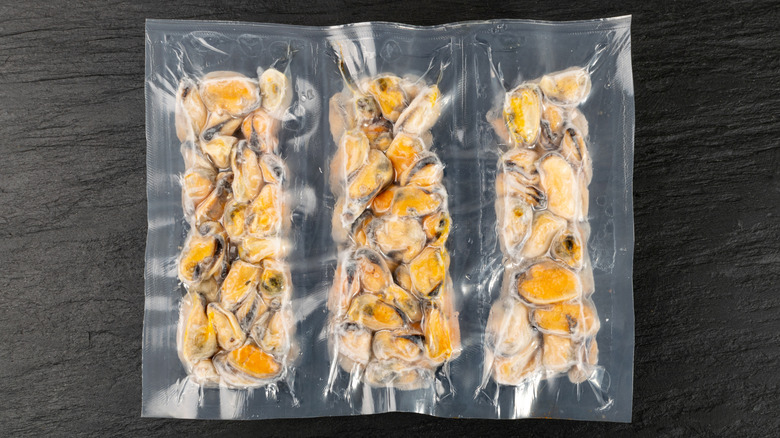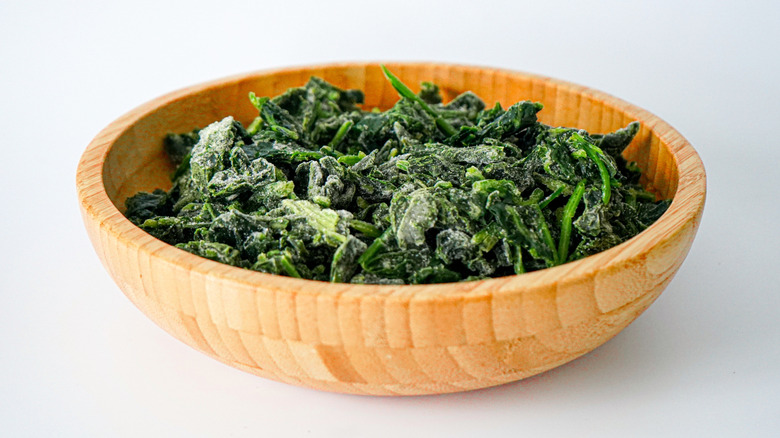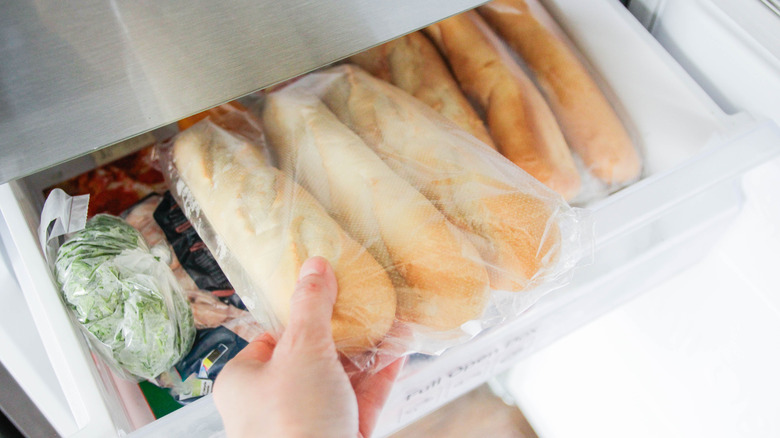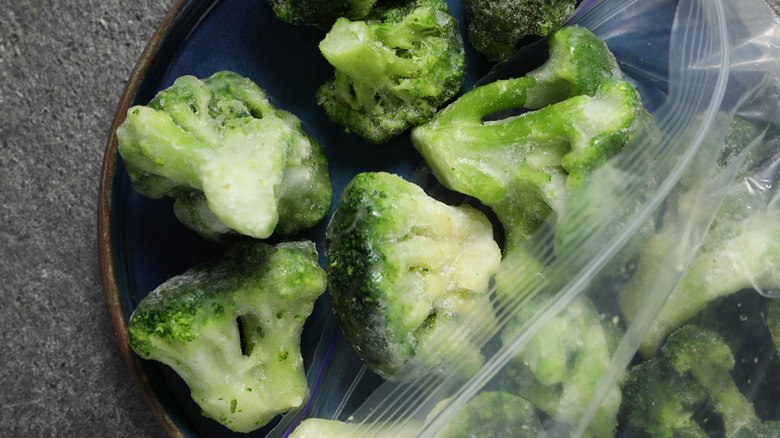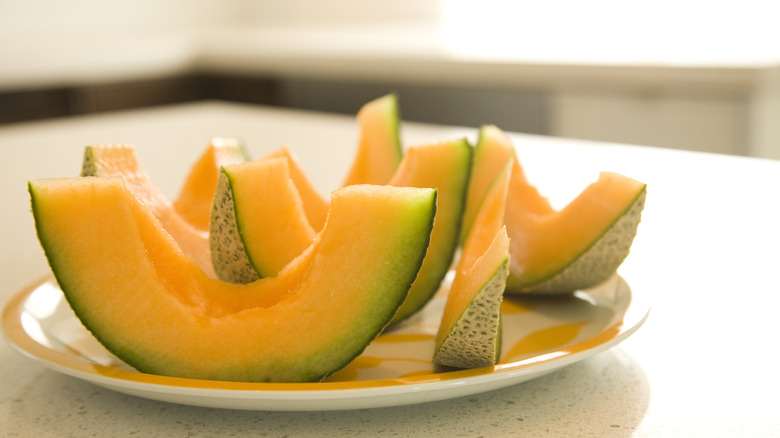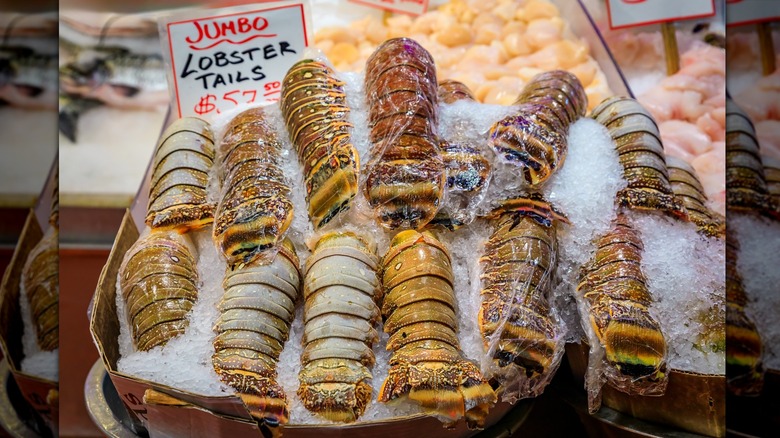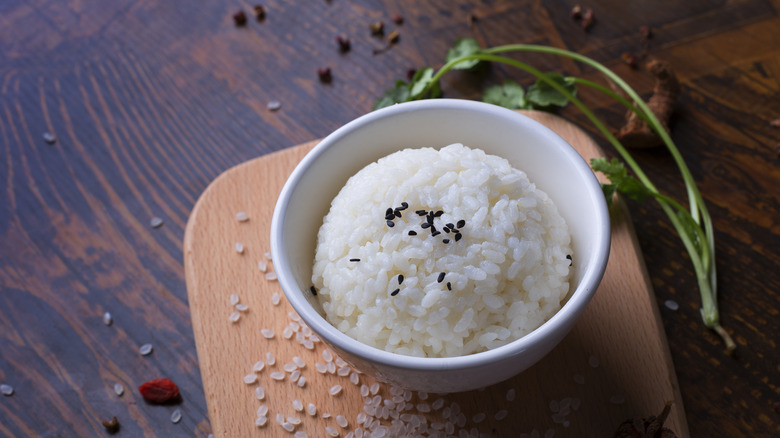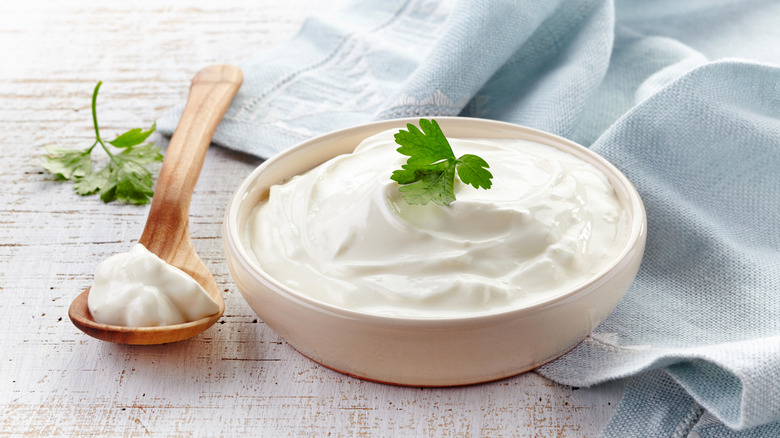12 Foods You Should Never Buy Frozen
When you don't have the time or energy to cook, frozen foods can be a lifesaver. Not only are they cost-effective, but many have an impressive shelf life. And when you're ready to eat, these foods are easy to prepare — simply reheat and you're good to go!
However, before stocking up on frozen foods, you should know that not everything in those frosty packages is worth the purchase. While some frozen foods rival their fresh counterparts, others fall short. The freezing process can compromise certain products, changing their flavor or texture and limiting their culinary uses. If you plan to follow a recipe, know that frozen ingredients will cook differently and may not yield the same results. Mind you, certain frozen items save you loads of money and still taste delicious. For example, we recommend a handful of frozen french fry brands, and Trader Joe's has an incredible selection of frozen meals. Ultimately, when it comes to frozen foods, it helps to know the good from the bad.
So, which items deserve the cold shoulder? We've scoured scientific data, pulled from our own experience, and asked a professional chef in order to come to an answer. In our research, we uncovered 12 foods you should never buy frozen. If you're curious about what made the cut, read on for the cold, hard truth.
1. Mushrooms
Do you enjoy the snappy texture and earthy taste of fresh mushrooms? Well, if you buy them frozen, you should lower your expectations. Fresh mushrooms change significantly when exposed to cold temperatures. Thanks to a high water content, mushrooms expand when frozen, which changes their consistency. Once thawed, they won't return to normal; instead, you can expect them to be soft and mushy.
There's no difference in the calorie and fiber content between fresh and frozen mushrooms, however, mushrooms may lose some of their water-soluble vitamins when frozen. This includes B vitamins, like thiamine, folate, and niacin, which are essential nutrients that support metabolism, skin, and brain health.
If you like firm, flavorful mushrooms, fresh is the way to go — and the way you store them matters, too. To understand more about this topic, we interviewed chefs about common mushroom mistakes. After purchasing fresh mushrooms, chef Andy Bruch from Point Easy in Denver recommends transferring them from "that styrofoam container and that plastic wrap, and into a situation where they can breathe," like in a paper bag or a wire basket with a paper towel. But when fresh isn't an option, we recommend going for frozen mushrooms that have already been cooked. Since cooking removes some of the moisture anyway, the textural differences will be less drastic.
2. Herbs
Fresh herbs bring dishes and drinks alive and invigorate the senses. Just envision a light sprinkling of dill across poached salmon, the vibrant aroma of freshly torn basil leaves, or the bright pop of mint in a craft cocktail. Now imagine if those herbs were frozen — would they still have the same impact? And are they worth buying frozen at all? To find these answers, we consulted Nic Vanderbeeken, executive chef of Apéritif in Bali.
In an exclusive interview with The Takeout, Vanderbeeken explains, "In my experience, fresh herbs like basil, parsley, and cilantro don't freeze well at all. Freezing changes their color, texture, and flavor, turning vibrant herbs into soggy, limp shadows of themselves. Plus, they lose the bright, aromatic quality that really transforms a dish."
Nothing can replicate herbs in their most natural state. Freezing takes away some of their vibrancy, which is why Vanderbeeken recommends using fresh herbs for garnishing or flavoring. And to enhance the potency, he encourages home cooks to prep herbs "just before serving to preserve the natural oils and flavors that bring dishes to life."
3. Brussels sprouts
When Brussels sprouts are out of season, buying them frozen might seem like a smart choice. It's obviously convenient and many people agree they're just as nutritious as their fresh counterparts. However, the moment you try to cook frozen Brussels sprouts, you'll notice a significant difference in texture — and not in a good way. When frozen Brussels sprouts are thawed, they become waterlogged, so you can say goodbye to that satisfying crunch and layered texture. When you chop them into salads, they won't deliver the same bite. And when roasted, frozen Brussels sprouts are even more disappointing.
Fresh Brussels sprouts can be halved and roasted with a little garlic, oil, and salt to deliver a perfectly crispy, caramelized texture. Sadly, frozen ones quickly turn soggy, leaving you with miniature cabbage heads that are warm but watery. Leaving them to roast longer won't do the trick, either. One Reddit user explains, "You can NOT undercook the frozen ones. It's nearly impossible to cook them so they have any crunch at all." The best option is to steam or boil frozen Brussels sprouts. Or better yet, buy them fresh and roast them to perfection.
4. Creamy and starchy soups
Buying premade meals is crucial when trying to eat healthy on a busy schedule. Soup is an excellent choice since it keeps well in the freezer — that is, unless it's creamy or starchy. Over time we've learned that cream-based soups aren't as delicious once defrosted, and it turns out, there's science to back up this claim.
When cream is slowly frozen and then thawed, the natural fats separate. Instead of a uniform creamy texture, you get water and oil. Stirring won't solve the problem, so it's best to avoid frozen soups with cream bases like chowders and bisques. Creamy soups that contain starchy solids such as noodles or potatoes have another disadvantage. Upon reheating, the starchy solids become mushy.
When it comes to buying frozen soups, stick to broth-based varieties. You can always jazz up a bland soup after it's reheated. This would be the time to add cream, starchy vegetables, or noodles. But if you really want a creamy soup without any extra effort, buy a canned option instead.
5. Mollusks
Nobody writes "mollusks" on their grocery list. But chances are, you eat more mollusks than you realize, since this group includes shellfish like clams, mussels, oysters, and scallops. Not everyone lives by the sea, so these seafoods are often available frozen. But should you buy them in this form? Not if you can avoid it. Mollusks have a delicate nature that makes them susceptible to changes in texture and flavor. As they begin to freeze, the water inside expands and breaks the cell walls. Once thawed, the mouthfeel is never the same; they become rubbery and watery and no longer have the fresh briny flavor we love.
The freezing process impacts each type of mollusk differently and oysters are particularly affected. If you enjoy the bright, briny flavor of raw oysters, you'll be sorely disappointed. Once frozen, you need to cook oysters before consumption, so forget about raw oysters on the half-shell. If you must buy this shellfish frozen, we recommend using it in soups or stews to mask the compromised texture.
6. Leafy greens
When you're trying to be healthy, leafy greens are a great go-to. They're packed with nutrients, low in calories, and offer such versatility that you can easily incorporate them into a variety of dishes like salads, sandwiches, and more. But when you buy frozen leafy greens, you can't quite use them in the same ways. The thawing process does a serious number on the texture and flavor. Those delicate leaves that were once crisp become limp and lifeless. Kale, arugula, and spinach are just a few examples of greens that lose some of their zippy, bitter notes when frozen.
Plus, compared to their fresh counterparts, frozen greens don't hold up in the kitchen. You can forget about fresh salads; thawed leaves are far too wilted. Used in sandwiches, the extra moisture becomes a mushy mess. And when baking kale chips, frozen leaves just don't crisp up or brown in the same way. Even in smoothies, frozen spinach doesn't blend with the other ingredients as well — and let's be honest, a chunk of frozen spinach won't hit the same as a chunk of banana or berries. So if you want the full, leafy green experience, stick to the fresh stuff.
7. Bread and pastries
Chefs might scoff at the idea of buying frozen bread. After all, nothing is quite the same as freshly baked bread. The smell of dough rising and that warm, fluffy texture aren't just a delight to the senses; they fill us with a pleasant and cozy feeling. But in these regards, frozen bread just can't deliver, instead detracting from the entire eating experience.
Precooked frozen pastries like croissants, danishes, and donuts are also affected in the same way. Why do you think Krispy Kreme sold over 1 billion donuts in a year? Because the chain prides itself on delivering a freshly baked product to provide that melt-in-your-mouth texture. If the donuts were frozen, we doubt they'd hit the same.
Luckily, if you want to save yourself future prep work, we have the perfect workaround: freeze dough for later. The freezing technique will depend on the type of dough you make, since a dense flatbread and a fluffy sourdough require different cooking methods. Some types of bread and pastries may also need to be thawed before they're baked. But once baked, you can expect a product that gives you all the flavor and warm feels.
8. Broccoli
If you enjoy the crisp, snappy texture of broccoli, steer clear of the frozen food aisle. When frozen, broccoli loses much of these beloved qualities, and that satisfying bite and nutty taste become muted. So while it might be okay in a busy stir-fry, it won't hold up as a roasted side dish. Reddit users agree with this sentiment. As one describes, "No matter how I cook it (or even just defrost it) the florets end up mushy and it's unpleasant." Another chimed in, "Broccoli is one of my favorite veggies, but I loathe frozen broccoli. It is entirely way too mushy, no matter what I do to it."
Frozen broccoli also takes a hit in the health department. Frozen vegetables are touted as being just as healthy as their fresh counterparts, but this may not be true for broccoli. Science Daily reports on a study that found that frozen broccoli isn't able to produce sulforaphane, a cancer and inflammatory-fighting phytochemical. The news outlet describes that this chemical is formed when fresh broccoli is chewed or chopped. However, if broccoli is heated to a high temperature before being frozen (such as when blanched), it loses this ability since the heat destroys the enzymes that would typically form sulforaphane.
9. Avocados and melons
Certain fruits rely heavily on their texture and can have a hard time returning to their original state when frozen and subsequently thawed. In our interview with Nic Vanderbeeken, he singled out two fruits that he would never buy frozen.
"I think some fruits, especially avocados and melons, suffer the most from freezing," Vanderbeeken explains. "The texture becomes mushy and watery, and these fruits lose their unique textures and mild flavors." Truthfully, we can't imagine going without the silky mouthfeel of a ripe avocado or the refreshing crunch of a juicy melon. So while frozen fruits may be convenient, these aren't worth the trade-off.
Vanderbeeken aims to give his guests the best dining experience, which is why he avoids using these frozen fruits. "When you want the creamy texture of avocado for something like guacamole or slices to top a dish, frozen avocados simply don't deliver." And on those hot summer days, the cool, crisp texture of melon is best in its freshest form.
10. Uncooked lobster
If you don't live near the ocean, frozen lobster is a tempting choice. But while you can purchase raw frozen lobster tails at seafood markets or Costco, we wouldn't recommend it because the freezing process significantly alters the meat's texture. Instead of a firm, slightly chewy consistency, you're met with a mushy mess. Freezing uncooked lobster causes the enzymes to leach into the meat, causing a soft, waterlogged texture.
However, texture isn't the only downside to frozen lobster. When lobster is frozen, the meat expands and sticks to the shell walls. Unfortunately, it doesn't always come loose when thawed. So if you buy raw frozen lobster and try to cook it, you'll be fighting to free meat from the shell, which can result in tearing.
Before you completely write it off, we have some good news: cooked frozen lobster doesn't have the same issues. It can last up to six months in the freezer, which gives you plenty of time to enjoy this tasty seafood. And if you need some cooking inspiration, we recommend making super buttery lobster rolls.
11. Cooked rice
Rice takes roughly 20 minutes to cook, which doesn't seem like much. But if you're especially busy or just not a fan of cooking, buying frozen premade rice is tempting. However, you may want to reconsider this choice due to textural and safety concerns.
One major issue with reheating cooked rice is the moisture content. Each time it's reheated, it loses water and becomes drier. The rice may feel tough or stale, and sauces won't absorb as well. But texture feels minor compared to our next concern. According to the Food Safety Information Council, rice also contains Bacillus cereus, a bacteria that can lead to food poisoning. When rice is cooked and then cooled, heat-resistant spores begin to multiply. The bacteria can survive freezing, and even reheating isn't guaranteed to kill these pathogens.
Since rice can be cooked with minimal effort, it's best to prep it fresh on the stove. If you make too much, don't freeze it for later; use leftover rice to make pudding instead. Lastly, if you must buy it frozen, don't let it cool for too long, and make sure to reheat it at a high temperature.
12. Certain dairy products
Some dairy products don't fare well in freezing temperatures, particularly those with a high moisture content like cream cheese, sour cream, and cottage cheese. They tend to form ice crystals in the freezer, and the fat may also separate, disrupting the overall texture even further and leading to a lumpy, coagulated result.
Without their smooth consistency, these dairy products can't be used in the same ways you would if they were fresh. Imagine unexpectedly chunky cream cheese on your morning bagel or dipping chips into grainy sour cream. Meanwhile, cottage cheese is naturally chunky thanks to its cheese curds. However, this snack can become watery after being frozen and thawed. Unfortunately, these dairy products have an expiration date, so if you use them sparingly, we recommend buying a smaller amount. If these dairy items are frozen, consider using them in baked goods to mask the changes in texture — but first, whip them with a food processor or blender for good measure.
By now, you're probably wondering who purchases these dairy products frozen anyway. Truthfully, most consumers wouldn't. However, if grocery or convenience stores aren't keeping their fridges at the correct temperature, products begin to freeze. Dairy should be kept between 36 to 39 degrees Fahrenheit, but you probably aren't carrying a thermometer into the grocery store. So, before you purchase it, squeeze the container slightly. If it feels rock-hard or you sense ice crystals crackling, give it a pass.

